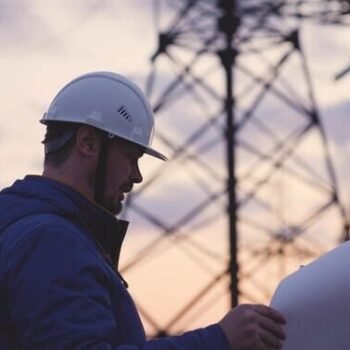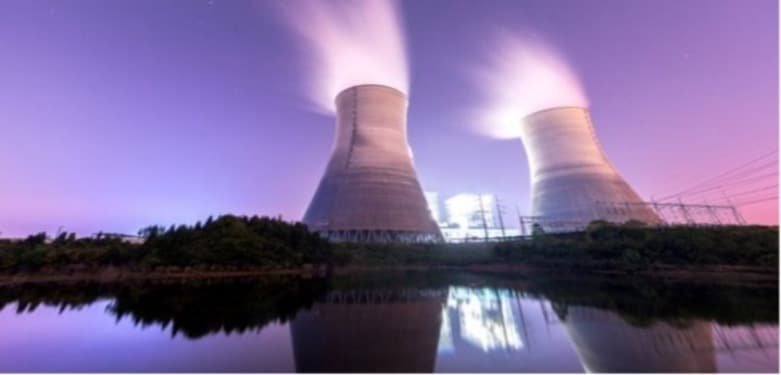
It’s a crisis you’re not hearing about on the news…
- Recently, German Finance Minister Christian Lindner warned that the country was on the brink of a “very serious economic crisis,”
And that the government needed to explore all avenues to plug the gaps in the nation’s energy supply.With Russia cutting 60% of the natural gas going to Germany through the Baltic Sea pipeline in retaliation for sanctions levied on it for its invasion of Ukraine, the German government needs to figure out how to make up that energy shortfall – and fast.As the head of the German Federation of Trade Unions, Yasmin Fahimi put it…
- “Entire industries are in danger of collapsing permanently because of the gas bottlenecks: aluminium, glass, the chemical industry…”
The German government is so desperate for energy, in fact, that they’ve had to turn to an old nemesis…coal
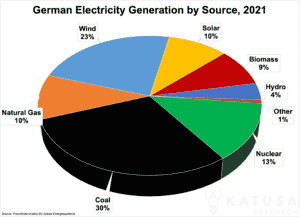
Last year, nearly a third of Germany’s electricity – 29.7% – came from coal.And this year, to reduce natural gas use, the country had to restart several coal plants. This is only a “temporary measure” to meet current demand requirements.So much for Germany’s ambitious climate targets!A Problem of Their Own MakingUp until the early 2000s, 25% of German’s power matrix came from nuclear energy.
- A total of 17 reactors produced over 150 TWh/year of electricity at its peak – just as much as coal does now for Germany.
Because of a long history of negative public opinion (the Chernobyl nuclear incident didn’t help) – Germany decided to phase out all its nuclear power plants by 2022.Germany now has 3 nuclear plants running providing 13% of the country’s electricity.And they are slated to switch off all 3 of these plants by the end of 2022.It was a foregone conclusion, until the invasion of Ukraine.Now there are calls to extend the lifetime of the remaining operating reactors. Or even to restart some of the more recently shut down ones – in light of Germany’s impending energy crisis.Here’s what the nuclear capacity in German looked like over the last 50 years…It’s a lot of stable, baseload power gone:
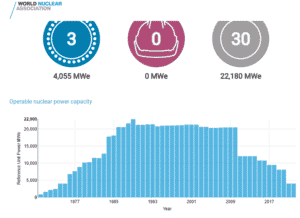
The Best of Both WorldsIf you’re wondering what I mean by baseload power…Baseload power is the minimum amount of electricity that needs to be supplied to an electrical grid at any given time.Let’s consider the popular renewable energy sources: wind, solar, and hydro.Of these three, only one of them – hydro – can stay on all the time.Wind power can only be generated when it’s windy. And solar power obviously doesn’t work at night.Hydro is the only one of the three which can keep producing electricity regardless of the conditions – which makes it a source of baseload power.Natural gas and coal plants, too, are sources of baseload power.On the greener side of things, you have nuclear, biomass, and geothermal for renewable baseload power.While the flexibility of renewable energy sources can allow for energy producers to turn them on and off as necessary to match demand, unlike the rigidly fixed power production of things like coal and nuclear plants, the availability and performance of each type of renewable energy vary greatly from country to country.These days, natural gas is becoming an increasingly popular baseload option – it burns much cleaner than coal without the negative stigma of nuclear.But that over-reliance on natural gas has put Europe in a pretty bad spot thanks to the war in Ukraine.
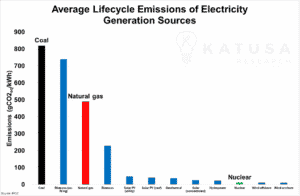
And while natural gas burns cleaner than coal, that’s a very low bar to beat.In the grand scheme of things, as the world shifts towards greener power production, natural gas must eventually go.Nuclear, on the other hand, remains competitive among all the other renewable energy options, making it an attractive option even in a net-zero world.Across the Border, A Much Different StoryThis low emission profile is one of the key factors that makes nuclear power attractive as a green energy source.There is nuclear waste that must be managed properly.But nuclear power doesn’t produce direct carbon emissions like its fossil-fuel counterparts.Its average lifecycle emissions come entirely from the…
- Cement and steel production required during construction,
- Manufacture of its various components, and
- Transport of materials.
The significant benefits nuclear power brings to the table can outweigh the negative stigma held by the public.France Goes Nuclear…Germany’s neighbor France, for instance, has a very different tale to tell:
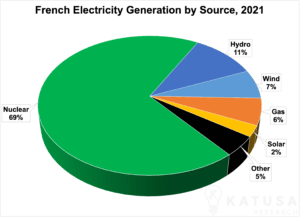
- France derives a whopping 69% of its power generation from nuclear.
Due to a long-standing policy based on energy security, the French government holds a very favorable view of nuclear power.And the country is a world leader in nuclear technology.Despite having more reactors than anyone else in the world except the U.S., France has also never seen a serious nuclear accident.This is thanks to their significant expenditures on technology and infrastructure.
- This policy has paid big dividends for France, making them one of the world’s largest net exporters of electricity.
All thanks to their very low cost of power generation.In fact, earlier this February, just two weeks before Russia invaded Ukraine, French president Emmanuel Macron laid out a plan to build at least 6 new nuclear reactors by 2050.With an option for an additional 8.At the start of his presidency, Macron had promised to reduce France’s reliance on nuclear energy… but the real and practical benefits of nuclear power generation have since changed his tune.And with the war raging on in Europe, Macron’s call for the rebirth of France’s nuclear industry is looking more and more prescient.The Case for UraniumBetween the Russian natural gas situation and the global push towards net zero, uranium’s been getting a lot of attention as the next big “green fuel”.As France shows us, nuclear energy can work – you just need the right policies and the right investments.Obviously, it’s not the be-all-end-all solution – you need flexible energy sources as well to accommodate for fluctuations in power demand.But nuclear energy can make for the cornerstone of a healthy electricity generation mix.At home, the push to expand the role of nuclear energy in the U.S. energy mix now sees broad bipartisan support.
- In South Korea, recently elected president Yoon Suk-yeol has vowed to go all in on nuclear power.
- Earlier this July, the Dutch government revealed plans to build two new nuclear power plants as part of their sustainable energy portfolio.
The list goes on, and the message is clear: nuclear will soon be back and in a big way.I’ve been covering uranium for two decades now, since well before its first big bull market run back in the mid-2000s.And I’ve never been as excited about the long-term prospects of uranium as I am now.I have a watchlist of uranium stocks, and capital ready to deploy.If you want to see exactly how I’m planning to ride the coming wave in the uranium markets, consider signing up for my premium newsletter service, Katusa’s Resource Opportunities.Regards,
Marin





